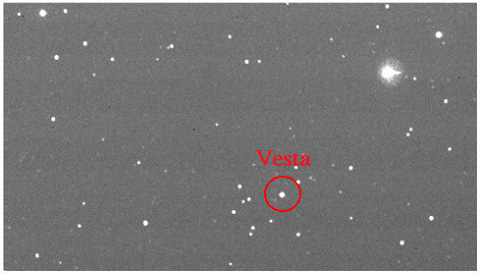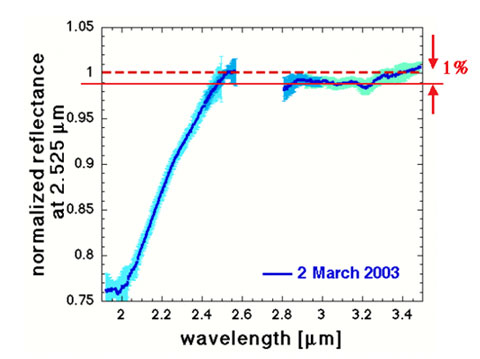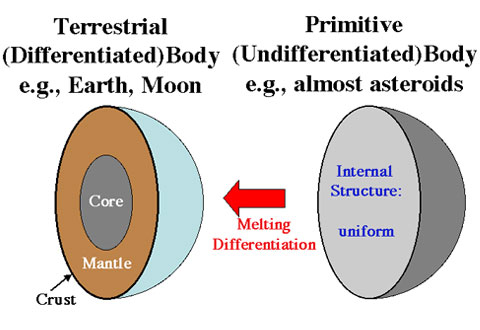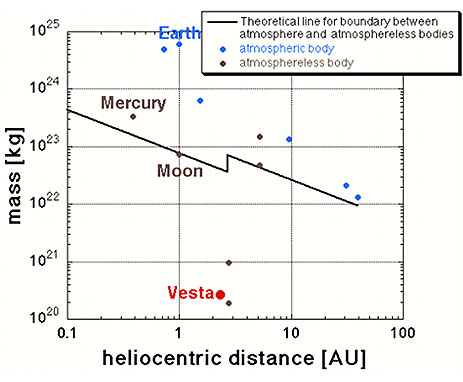TOP > Topics > 2003 > ISAS/JAXA presented that researchers from ISAS/JAXA and other research institutes discovered that evidence of hydrated and/or hydroxylated minerals on the surface of "the smallest terrestrial planet" asteroid 4 Vesta.
![]()
ISAS/JAXA presented that researchers from ISAS/JAXA and other research institutes discovered that evidence of hydrated and/or hydroxylated minerals on the surface of "the smallest terrestrial planet" asteroid 4 Vesta.
Research team from ISAS/JAXA, National Astronomical Observatory of Japan, Joint Astronomy Centre, University of Tokyo, and Brown University discovered an evidence of hydrated and/or hydroxylated minerals on the surface of the atmosphereless differentiated body 4 Vesta (diameter = 500 km) (See Figure 1) by using the United Kingdom 3.8-m Infrared Telescope, located on Mauna Kea, Hawaii, on UT 1 and 2 March 2003 (See Figure 2).
Asteroid 4 Vesta located between Mars and Jupiter is thought to include low concentrations of volatile materials due to being experienced high temperature enough to melt the rocks (See Figure 3), and too low gravity to hold the atmosphere (See Figure 4).
Figure 1 |
Figure 2 |
Figure 3 |
Figure 4 |
4 Vesta is unlike the 25143 Itokawa, which will be explored by HAYABUSA (MUSES-C) spacecraft (See Figure 5 ), the "smallest" terrestrial planet with core, mantle and crust.
According to analysis of HED meteorites and simulation of impact, source of hydrated and/or hydroxylated minerals is not Vesta inherent origin but fragments of impactors of carbonaceous chondrites containing material associated with life such as hydrated mineral, hydrocarbons, amino acids. The detection of 3-µm absorption features from asteroid 4 Vesta may provide clues to the origin of volatile materials on terrestrial planets.
This research was carried out in observation time by the international cooperation with Joint Astronomy Centre and the National Astronomical Observatory.
This result will be published in Geophysical Research Letters.
Figure 5 |
Sunao Hasegawa
hasegawa@planeta.sci.isas.jaxa.jp
October 29, 2003









